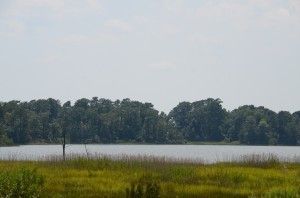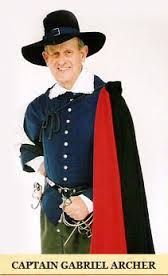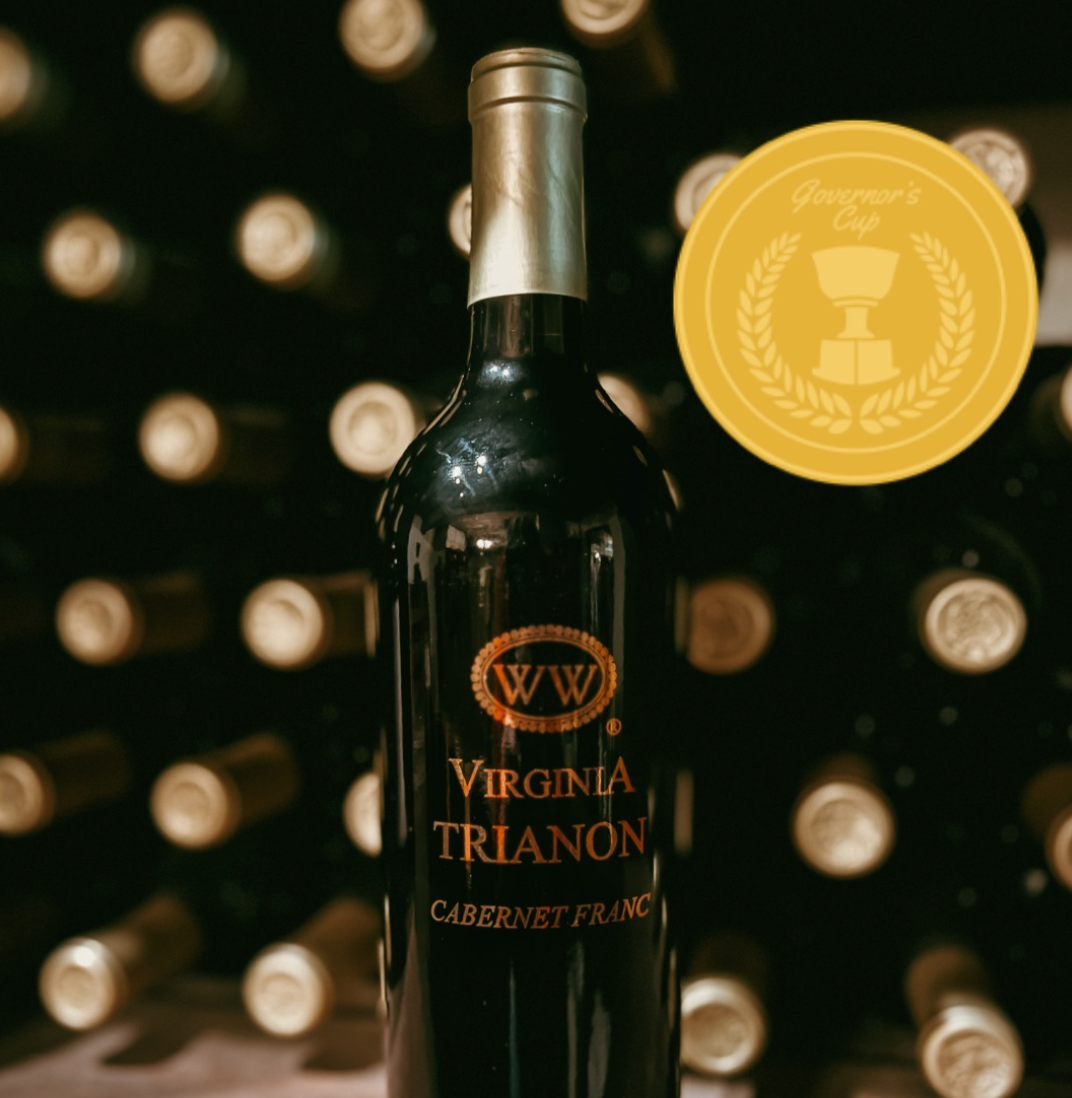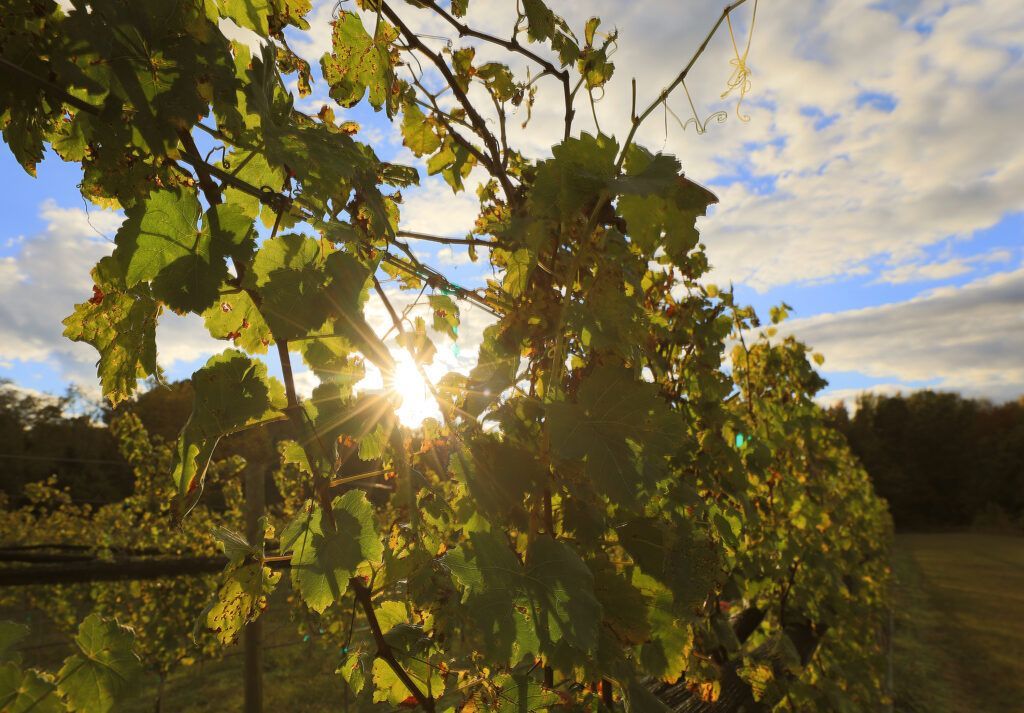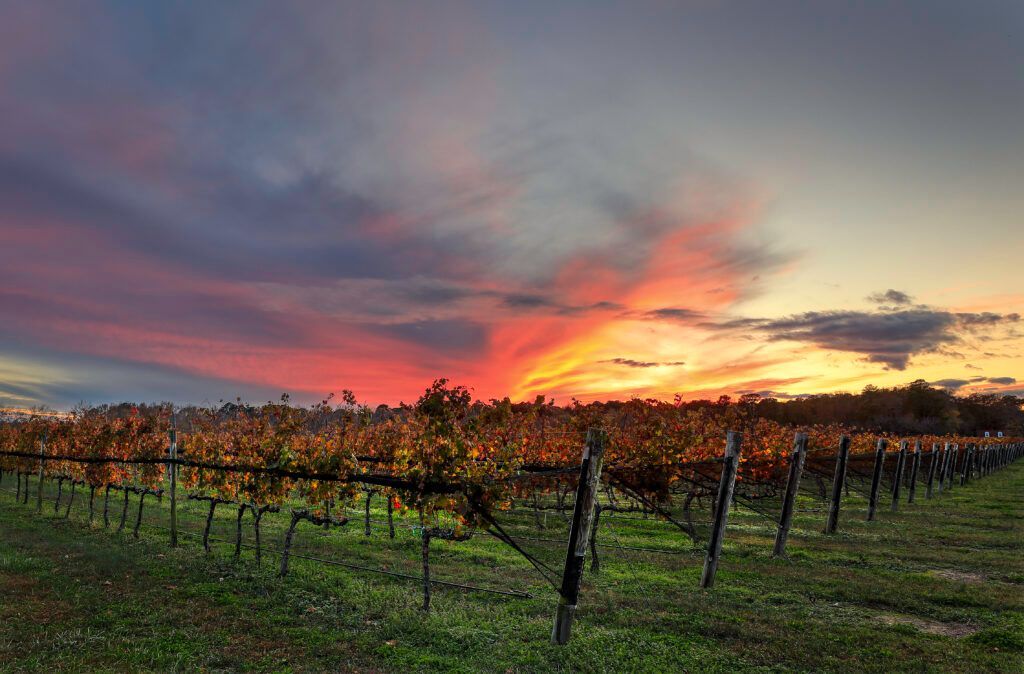Gabriel Archer of 1607 Jamestowne Celebrated by a Virginia Reserve Wine
Gabriel Archer was a key figure of the founding of English America. A Cambridge educated lawyer, Gabriel Archer was the Co-Captain of the Godspeed, the lead ship of the three vessels that brought the men that founded the first permanent settlement in the English New World. They were establishing a colony for the Virginia Company, a private venture under a Royal Charter.
Archaeologists from the Jamestown Rediscovery Project work at a site where the bodies of four of the founders of English America were discovered. Photo courtesy of Jamestown Rediscovery Foundation (Preservation Virginia)
The reliquary found on the grave of Gabriel Archer as it appears following cleanup. Photo courtesy of Jamestown Rediscovery Foundation (Preservation Virginia)
Archer wanted to locate the settlement at the mouth of a creek, on a piece of land that was to be named as Archer’s Hope. This was not meant to suggest his aspiration. Rather, reportedly in the words of the period, “hope” referred to an “opening or hollow amongst hills”. However, Archer was overruled by Captain John Smith who placed the settlement instead on “Jamestowne” Island. The creek became known as Archer’s Hope Creek and, subsequently, as College Creek as it finds its source behind the College of William & Mary that was chartered in 1693.
The bodies were found at the site of the first church to be established on Jamestown Island.
When, in January 1982, Peggy and I first walked on that acreage where Captain Gabriel Archer had recommended the colonists settle, it was bitterly cold. But, the farm grounds were beautiful and inspiring. After many visits to other farms, we decided to acquire what we later, after considerable historical research, would find was not just Jockey’s Neck Farm, as it was then called, but Archer’s Hope. In the meantime, we had named our project, our farm, Wessex Hundred.
Peggy’s and my heritage stem from the lands of the Saxons. Wessex means “Saxons of the West”. Wessex, in the western part of England, was the kingdom of Alfred the Great who reigned in the ninth century. We were Saxons of much farther West.
“Hundred” was a descriptive of early settlements in the Virginia colony to refer to a parcel where one hundred families could produce enough food to feed themselves.
Our goal was to have an agricultural operation that would be our home for our children. We had determined, after my experience in Burgundy, that a winery was to be the centerpiece of the operation.
Wessex Hundred became home to the Williamsburg Winery in 1987 and later to its diverse operations: Wedmore Place, a 28 room country hotel, the Café Provencal, a fine dining restaurant; and, right across from the winery itself, the Gabriel Archer Tavern, a farm-to-fork, informal, dining establishment opened in ’87 with the focus on “Delicious Simplicity”.
The marker identifying the location of Archer’s Hope on the Colonial Parkway. Photograph by Geoff Wade.
The historical research had led us to talk to many historians and archeologists, and we discovered the treasures of the land and its chronicle from 1607 to the twentieth century.
I was raised with an appreciation for history. By the time I came to the U.S. as a seventeen year old lad, I had experienced a lot of travel with my parents, from Norway in Scandinavia to Italy and Spain on the Mediterranean and every country in between.
My mother always had done research to prepare our family trips, and we were taken to visit what felt to be every castle, cathedral and palace on the way. That experience had left an impact on me and gave me a deep appreciation of history.
Therefore, it was just logical that Peggy and I would seriously learn all we could on the rather substantial material that we found on the history of the farm.
Gabriel Archer and his preference to place the first settlement on our farm loomed large and was, in many respects, inspiring. So much so, in fact, that Peggy and I deeded the land that would have been “Archer’s Hope” (and can now be seen from the Colonial Parkway, a roadway between Williamsburg and Yorktown) into Conservation Easement. We chose not to build on that land in order to protect the historical vista. This site is now identified by a state historic highway marker.
Captain Gabriel Archer was born in 1575 and grew up in Mountnessing, Essex, about 25 miles from London. He attended Cambridge University and then Grays Inn, where he studied law.
William Young, the interpretor who has studied the life of Gabriel Archer and regales his audience with stories of the First Settlement.
Archer had been part of an expedition in 1602 on the coast of “Northern Virginia”, what would later be called New England. He had written a then widely read account of that trip. He had been an enthusiastic proponent of the Virginia Colony and had been named co-captain of the Godspeed that arrived in the New World in 1607. Subsequently, Archer was named as the first secretary of the colony but initially was not appointed to the governing council. He was a fierce critic of Captain John Smith and other leaders and was one of the principals involved in deposing the first president of the colony, Edward Maria Wingfield.
After Smith was sent home a few months later, Archer was one of the most important of the leaders remaining. He returned to England in 1608 and sailed back again to Virginia a year later with the fleet that was damaged and scattered by a major hurricane in the Atlantic. He was on one of the ships that survived the crossing and arrived at Jamestown in August 1609. He died in 1609 or 1610 during the terrible Winter known as “The Starving Time”. His burial within the church’s chancel demonstrates that his status was recognized among the settlers even during a time of great stress. He was only 35.
One of the archeologists that we had met told us about a specialist in seventeenth century history and construction. This is different from the general understanding of American Colonial period style which is essentially derived from or inspired by the American eighteenth century architectural style.
Personally, I had always felt an interest in medieval construction, and the seventeenth century styling is much more rustic and representative of the late medieval era. This interest propelled us to meet William Kelso, an extraordinary archaeologist who communicates enthusiasm. At the time, he was Director of Archaeology at Poplar Forest as well as Commissioner of Archaeology for the Virginia Historic Landmarks Commission.
Among all his projects, Dr. Kelso had actually directed archaeological studies conducted on our farm during which he found the site of the footing of the Bland Plantation identified on one of the many French military maps of 1781. For lack of funding, he had simply reburied the site and left its precise location on the historical records which we had received.
We discussed the idea of finding an original seventeen century house and transporting it to the farm. Dr. Kelso liked the idea. After much discussion on many topics related to his expertise, we decided to sponsor one of his projects. He then asked us to sit on the Board of the Virginia Company Foundation which he had created in order to protect as many of the few remaining constructions of that century. We offered the office of the winery as a good meeting place for his board.
It was during one of these meetings, sometime around 1989-90, that the topic of the Jamestown settlement came up. Most members who were from the APVA, the Federal Park Service or other institutions were conclusively certain that the site of the original fort had been totally eroded by the current of the James River.
Bill, on the other hand, was intrigued. Peggy and I strongly supported a motion for Bill to request access to the island area where he thought he could find artifacts and possibly evidence of the original settlement of 1607. The rest is history. As a result of his ground-breaking work on Jamestown Island, Bill has since been recognized by Her Majesty, Queen Elizabeth II who awarded him the title of Commander of the Most Excellent Order of the British Empire in 2012.
At a forthcoming meeting with Dr. Kelso, I plan to resurrect the idea of bringing an old seventeenth century house right here next to the winery and discuss the potential of a serious study of the grounds of the Bland Plantation.
The most recent news was that, after two years of scientific evaluations, one of the four bodies that Dr. Kelso had unearthed in the site of the original Jamestown Church was identified as that of Gabriel Archer. Two intriguing artifacts were found in Archer’s grave: part of a captain’s leading staff and a silver box. The leading staff is indicative of his military rank and was placed on top of his coffin in his honor. The stature and importance of the man became front page news.
We were delighted. Already in 1991, we had decided to name our first “reserve” wine, a red blend of different Vinifera varietals, the “Gabriel Archer Reserve”. Descendants of Gabriel Archer living in Richmond, VA contacted us and expressed an interest in our activities both in the sense of their interest in wines, but more importantly about our research on the history of our farm.
The wine became the flagship of our product range. Friends of the winery have written to us about how well the ’93 vintage has aged and bested some top Bordeaux first growth wines in tastings. The most recent news was that the Gabriel Archer Reserve received wonderful ratings by none other than Robert Parker’s Wine Advocate. Both the 2009 and 2010 received a 90 point rating.
Almost 25 years after the first vintage of the Gabriel Archer Reserve, the history of the man has come to life in a bright light.
Cheers to Gabriel Archer.
Enjoy Life,
Patrick G. Duffeler
Founder & Chairman
